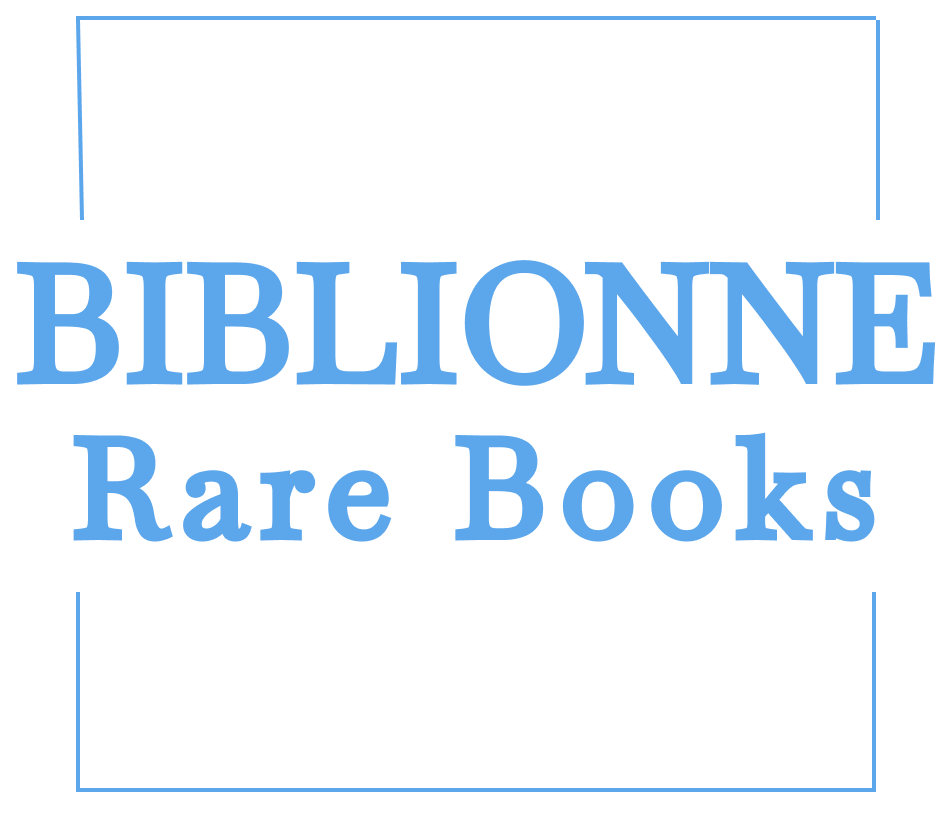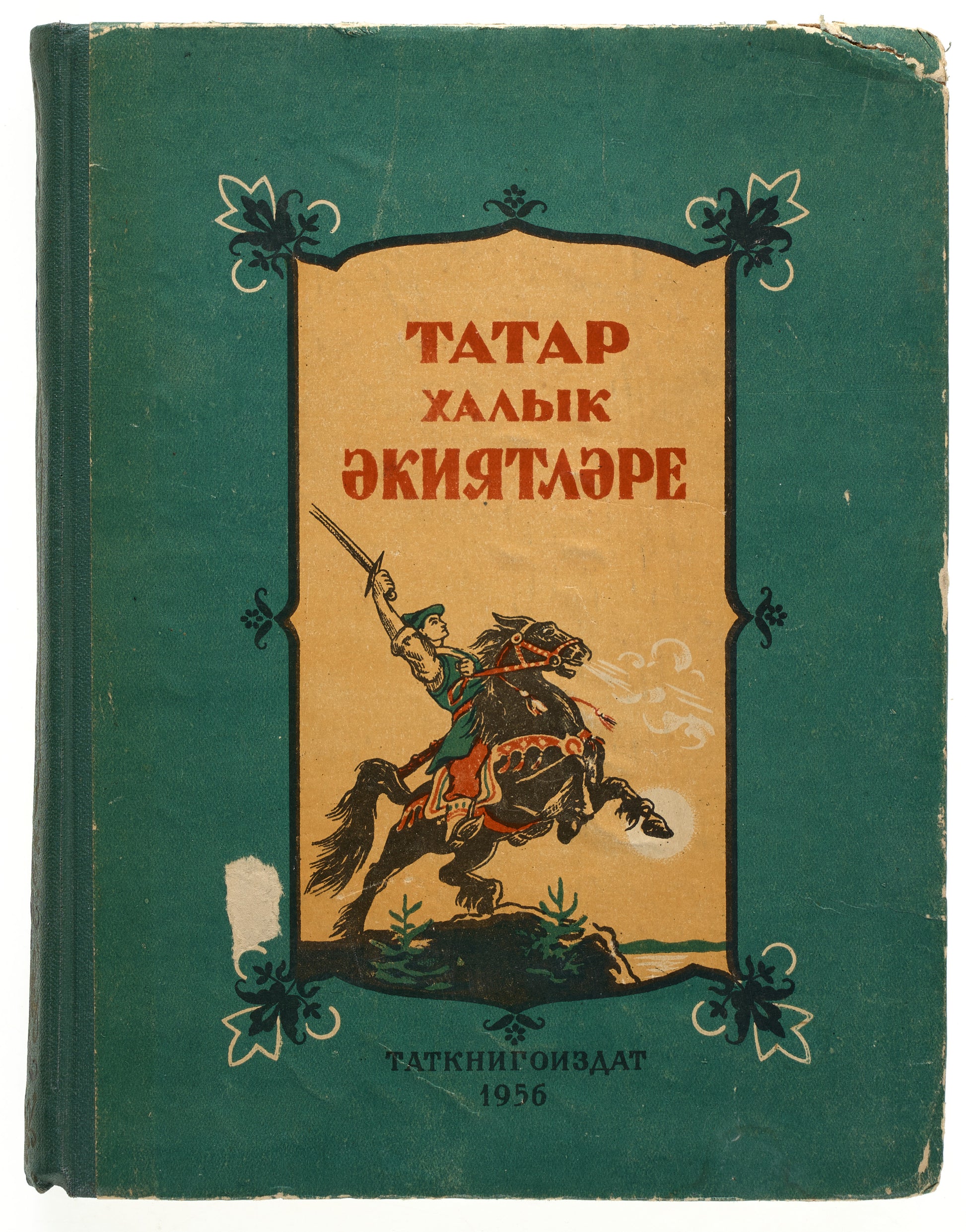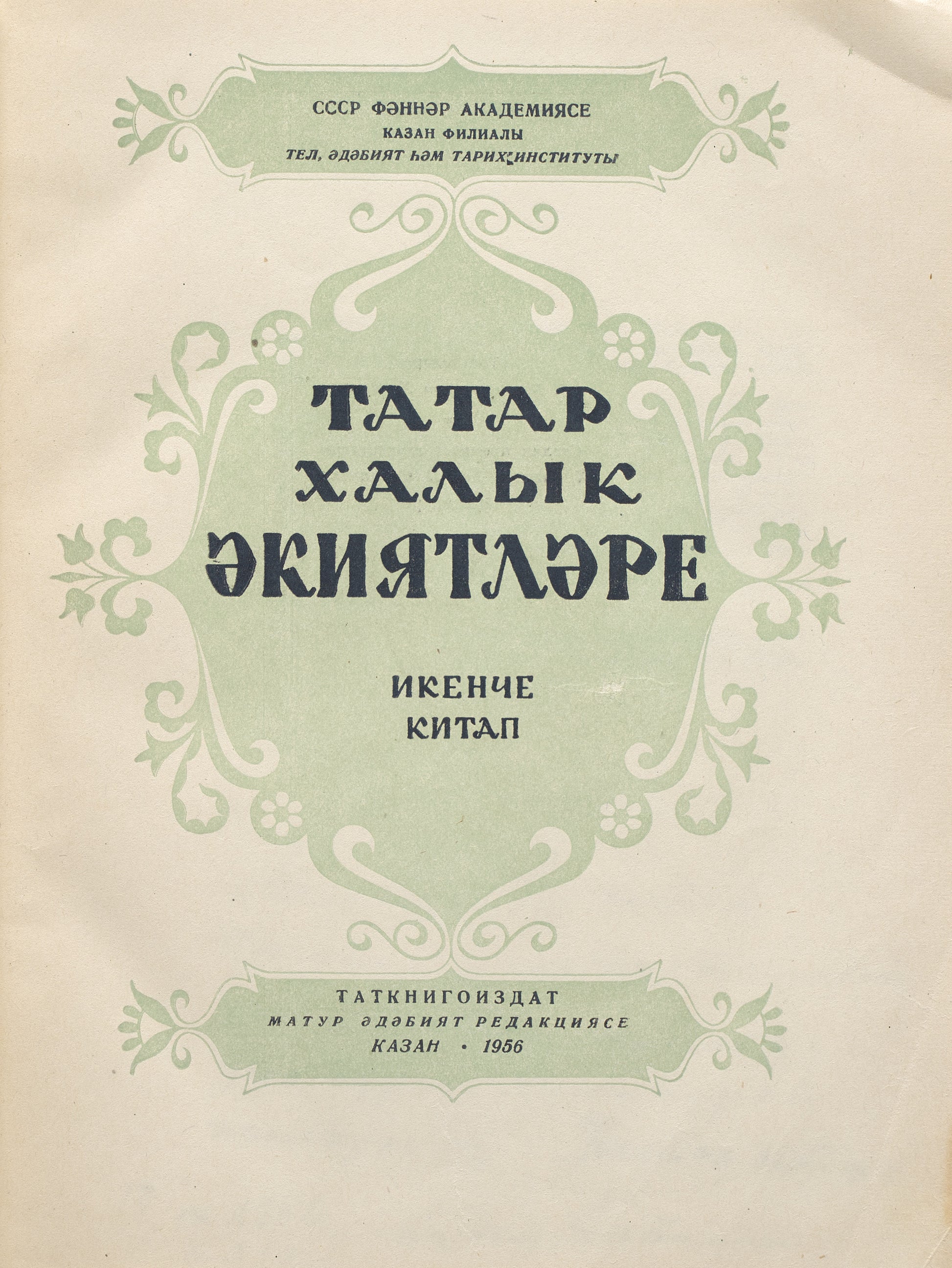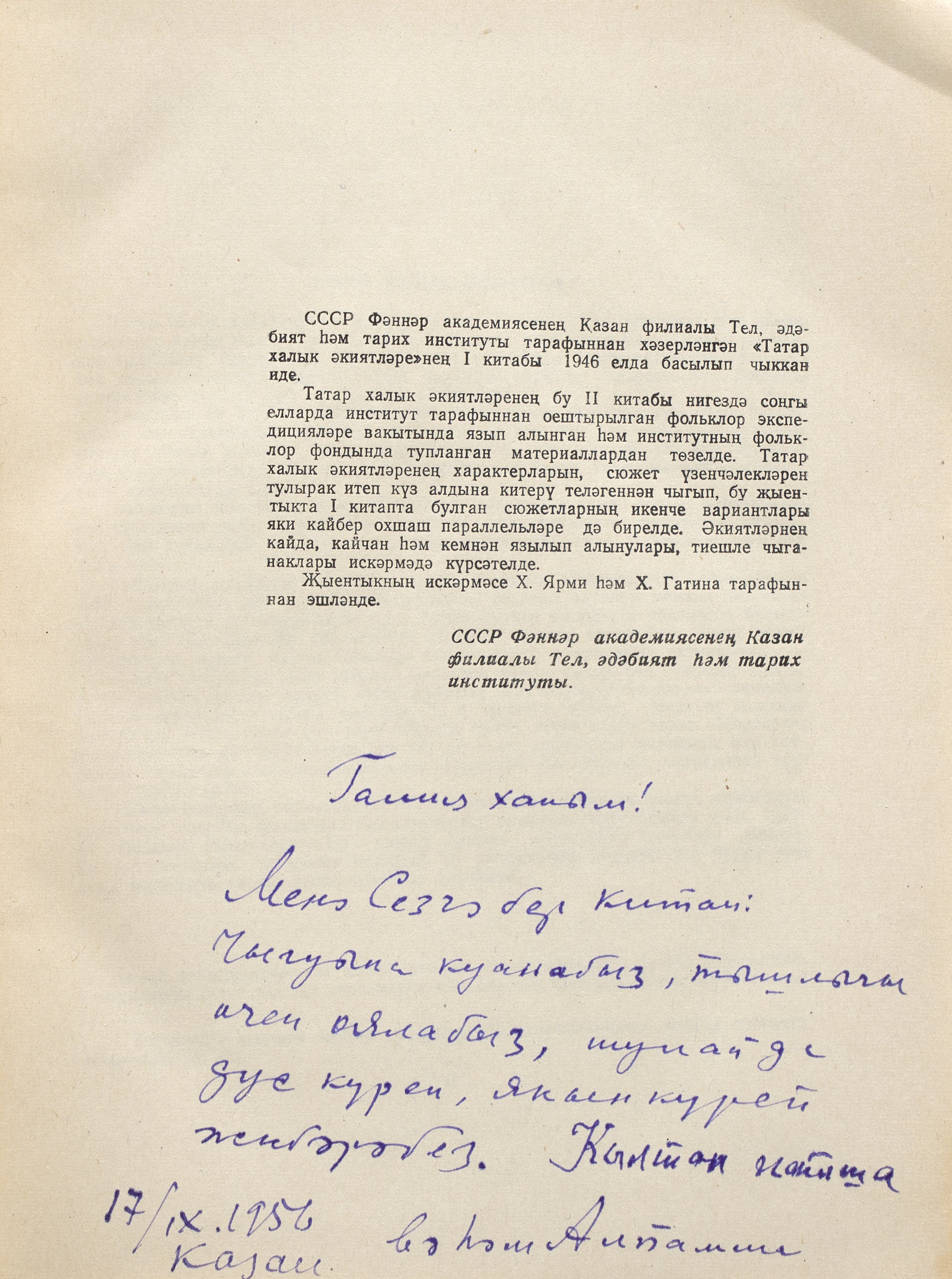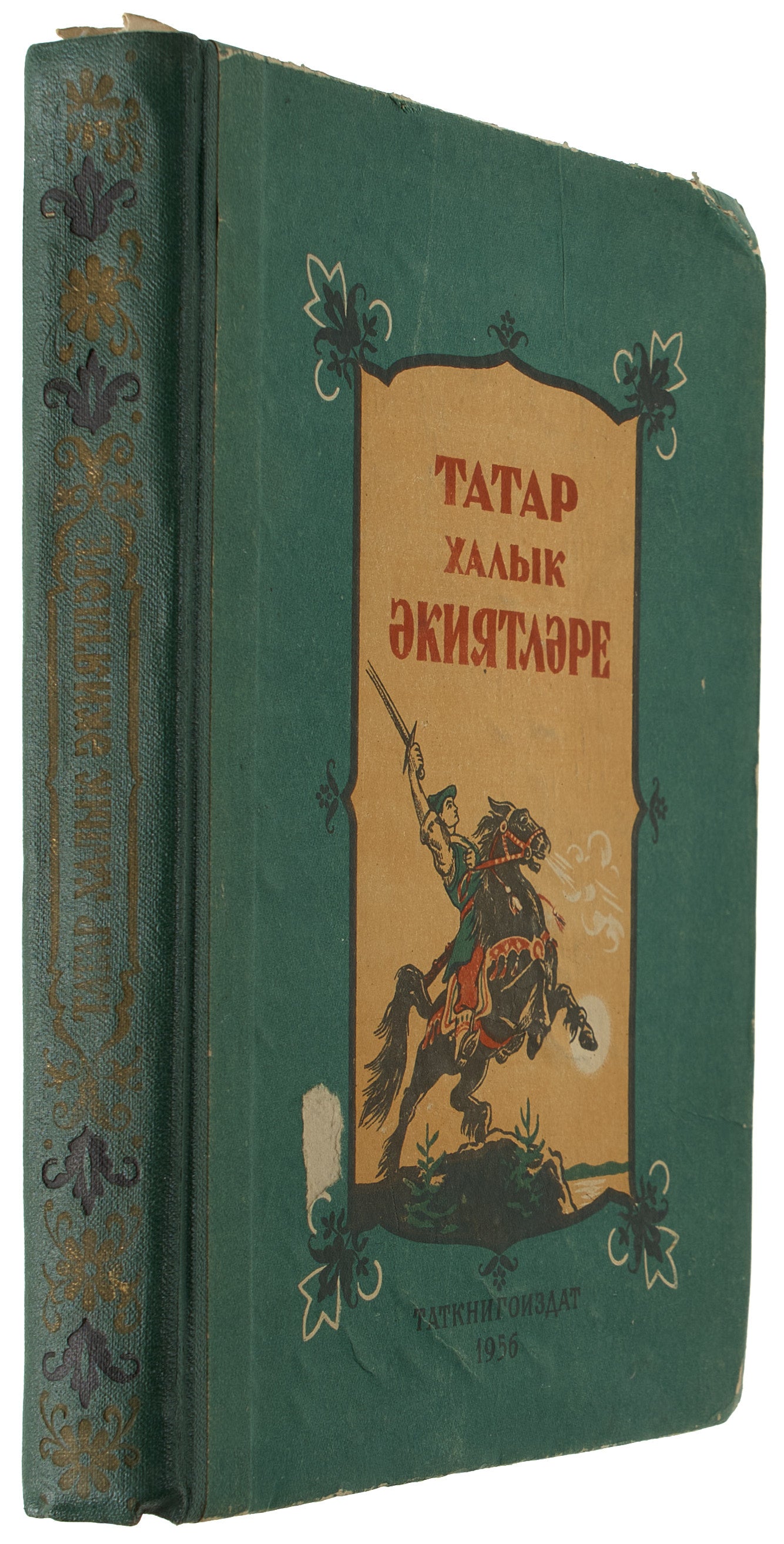Tatar Folk Tales. Proof copy, signed and inscribed.
Tatar Folk Tales. Proof copy, signed and inscribed.
Couldn't load pickup availability
[Tatar Folk Tales]. Tatar Halyk Akiyatlare. Second Book.
Title in Russian and Tatar. Text in Tatar.
[Compiled by G. Bashirov and Kh. Iarmukhamedov].
[Illustrations by Kh. Iakupov and L. Fattakhov].
Kazan, Tatknigoizdat, 1956.
8vo, XXVII, [1], 393, [2] pp., 16 l.ill.
In original pictorial paper-covered boards.
In good condition, boards worn, small loss of paper to front cover, upper corner of the front cover and lower corner of the back cover are split, marks in pencil in text.
Inscription in Tatar on p. V: 'Ğäliyä xanım! / Menä sezgä ber kitap: / çığuwına quwanabız, tışlığı / öçen oyalabız, şulay da / dus kürep, yaqın kürep / cibäräbez. Qıltap patşa / 17/IX.1956 / Qazan / wä häm Alpamşa' [To Ms. Galiya! Here is a book for you: We are happy about its release, embarrassed about its cover, but still send it to you as a friend, with warmth. 17/IX/1956. Kazan. Kiltap Patsha and also Alpamsha].
Based on the inscription dated September 17, 1956, we can conclude that this copy is a proofreading copy (the book was signed for printing on December 16, 1956). Rare edition in Tatar. In Russian this collection was issued in 1957.
This scientific edition of Tatar folk tales was prepared by the Tatar Research Institute of Language, Literature, and History in Kazan (which became part of the Kazan branch of the USSR Academy of Sciences in 1946). Shortly after the institute's founding in 1939, numerous expeditions were organized to gather Tatar folklore. As a result of this extensive work, the first scientific collection was published in 1946, followed by this second book ten years later. While Tatar folklore and folk tales were occasionally studied, collected, and published even before the Russian Revolution, these editions were the first to do so in a scientific manner and are still considered authoritative today.
The compilers of this book were Khamit Iarmukhamedov (1904–1981), a folklorist, philologist, and the institute's director from 1942 to 1944, and Gumer Bashirov (1901–1999), a writer and editor. Interestingly, the inscription may have been left by them, but instead of signing with their real names, they used the names of characters from the Tatar folk tale ‘Alpamysh’.




